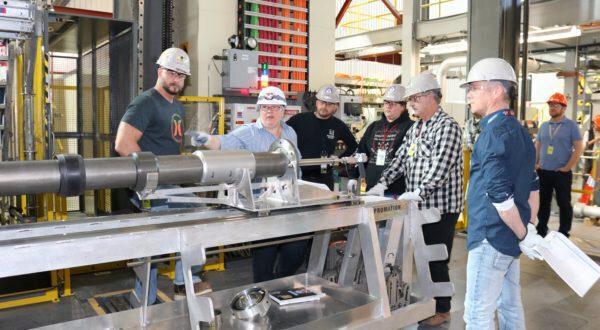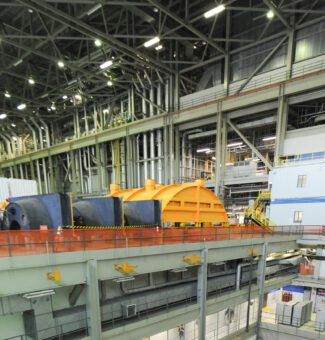Millwright defied gender expectations to forge career in nuclear
After a layoff from a job as a graphic designer, an aptitude test showed Lorraine Chipman was mechanically inclined.
It was an accurate assessment. Now, almost three decades later, Chipman, a millwright, finds herself training other members of her skilled trade on some of the tasks required for the Darlington Refurbishment project.
“There’s no way I would have thought 26 years ago, when I joined the trades, that I’d be teaching my colleagues to do a job in a nuclear reactor,” said Chipman during a break from work at Darlington Nuclear Generating Station’s state-of-the-art training and mock-up facility, where training is completed before workers move to the reactor face.

There, she is readying a crew on calandria tube insert release, a job that uses shock heating of about 1,000 degrees Celsius for approximately two seconds — about the same amount of energy a typical house would use in two weeks — to release a mechanical seal as part of reactor disassembly.
Chipman always had an interest in building and mechanics. In high school during the late 1970s on Cape Breton Island, she looked to take an Industrial Arts course to further her initial dream of becoming an architect.
“When I tried to join the program in Grade 11, they told me I couldn’t because I was a woman,” she recalled. A visit by her father to the school soon resulted in Chipman and another young woman being admitted to the course.
“I never really thought any more about it until I had moved to Ontario and was laid off from my graphic design job,” she said.
A visit to an unemployment office, where aptitude testing was done, led her to her eventual career path. Chipman completed the necessary schooling and hands-on work required for her apprenticeship and by the mid-1990s, she was an accredited millwright — one of only about a half-dozen women in the job in Ontario at that time.
Her first job in the field was on the re-tube project at Pickering Nuclear. Since then, she’s worked in a variety of industries, from automotive to food facilities.
“Millwrights are everywhere — automotive factories, breweries, cement plants, salt mines,” Chipman said. “I’ve put in thousands of miles of conveyor equipment.”
Of all of them, she said, nuclear is the “most involved — there are so many facets.”
She would know, having worked at various points in her career at both Pickering and Darlington, as well as at the Bruce Power nuclear facility. But even though she often finds herself returning to ply her trade in familiar locations, the work is different every day.
“There’s nothing mundane about what we do,” Chipman said. “It’s always a challenge — every day, you’re challenging yourself.”
Did you know?
Women still make up only about five per cent of the skilled trades workforce.
Subscribe and stay informed
Sign up to receive the latest news, project updates, and event information from OPG.


